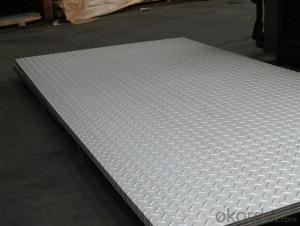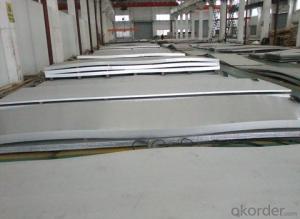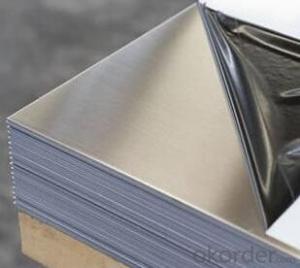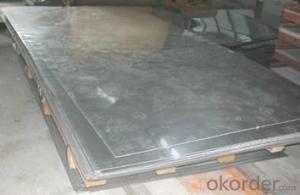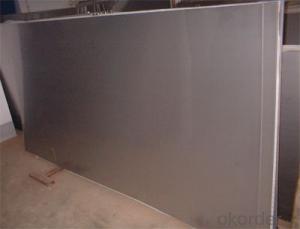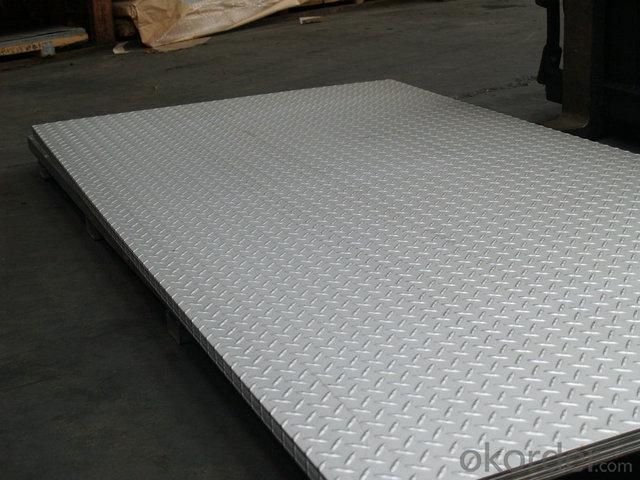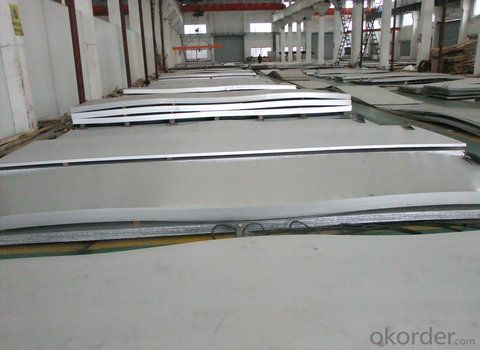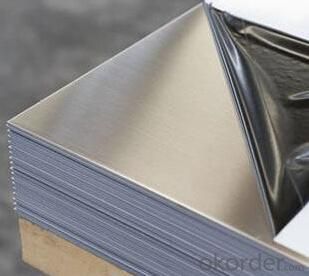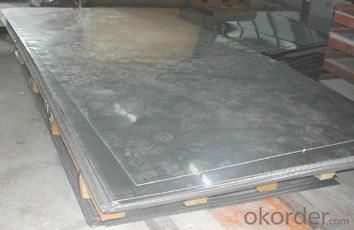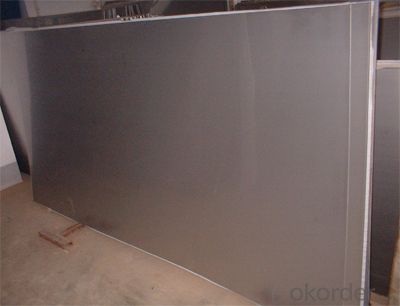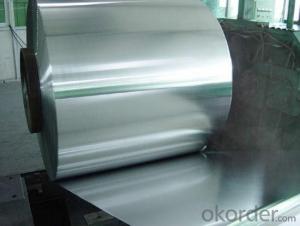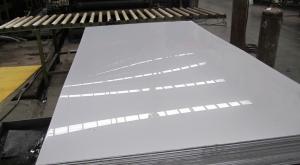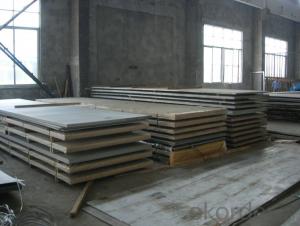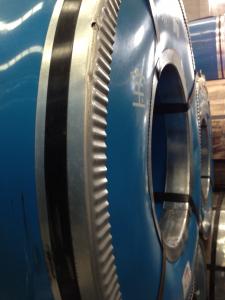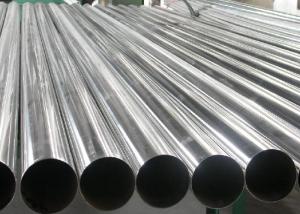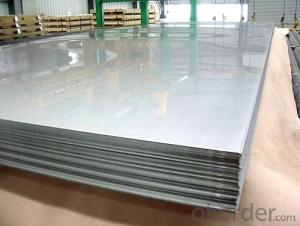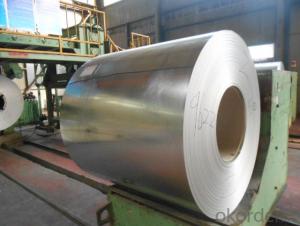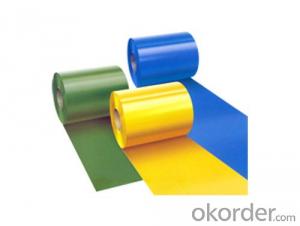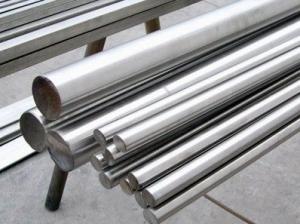Stainless Steel sheet with best polishing treatments
- Loading Port:
- Shanghai
- Payment Terms:
- TT OR LC
- Min Order Qty:
- 10000 m.t.
- Supply Capability:
- 5000000 m.t./month
OKorder Service Pledge
OKorder Financial Service
You Might Also Like
Hot sale stainless steel sheet 201/202/304/304l/316/316l/430 in china alibaba
Description of Stainless Steel Sheet:
Description | steel sheet,hot rolled steel sheet,cold rolled steel sheet, steel sheet,sheet,steel plate |
Standard | ASME, ASTM, EN ,BS,GB,DIN, JIS etc |
Application | Steel sheet applies to construction field, ships building industry, petroleum & chemical industries, war and electricity industries, food processing and medical industry, boiler heat exchanger, machinery and hardware fields. |
Packaging | Standard export sea-worthy packing |
Delivery time | 10-30 days |
Quality | No.1 |
Productivity | 500 tons/Day |
Note | Our company has cooperative relation between the domestic agents. Stainless steel sheet can be made accordingto the customers requirements. Fasten delivery. Quality assured. |
Contacts | If you have any question,please feel free contact me. |
Stainless steel sheet surface finish characteristics
Surface finish | Characteristics and application |
2B | The surface brightness and flatness of no2B is better than no2D. then through a special surface treatment to improve its mechanical properties,No2B could nearly satisfy comprehensive uses. |
No.1 | Polished with abrasive belt of grit#100-#200, have better brightness with discontinuous coarse stria, used as inner and external ornaments for building, electrical appliances and kitchen utensils etc. |
No.4 | Polished with abrasive belt of grit #150-#180,have better brightness with discontinuous coarse stria, but thinner than No3, are used as bathtub buildings inner and external ornaments electrical appliances kitchen utensils and food processing equipment etc. |
HL | Polished with abrasive belt of grit #150-#320 on the NO.4 finish and has continuous streaks, mainly used as buildings ornaments elevators, door of building, frontal plate etc. |
BA | Cold rolled, bright annealed and skin-passed, the product have excellent brightness and good reflexivity like mirror, kitchen apparatus, ornament etc. |
8K | The product have excellent brightness and prefer reflexivity can to be the mirror. |
Main Features of stainless steel sheet :
•Escalator, Elevator, Doors
•Furniture
•Production tools, Kitchen appliances, freezers, cold rooms
•Auto Parts
•Machinery and Packaging
•Equipment and Medical devices
•Transport system
Product Details:
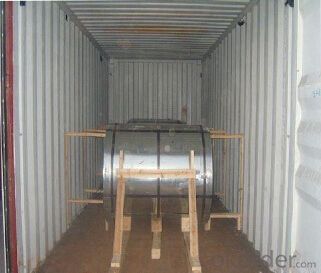
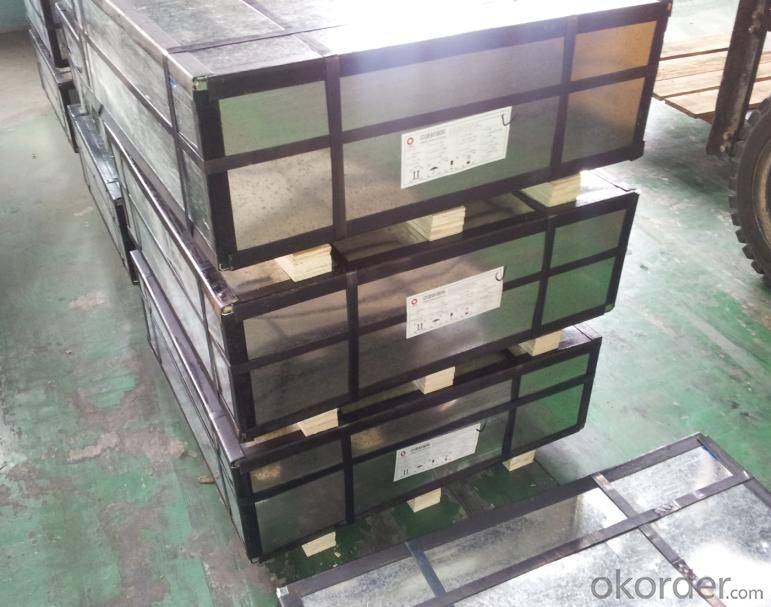
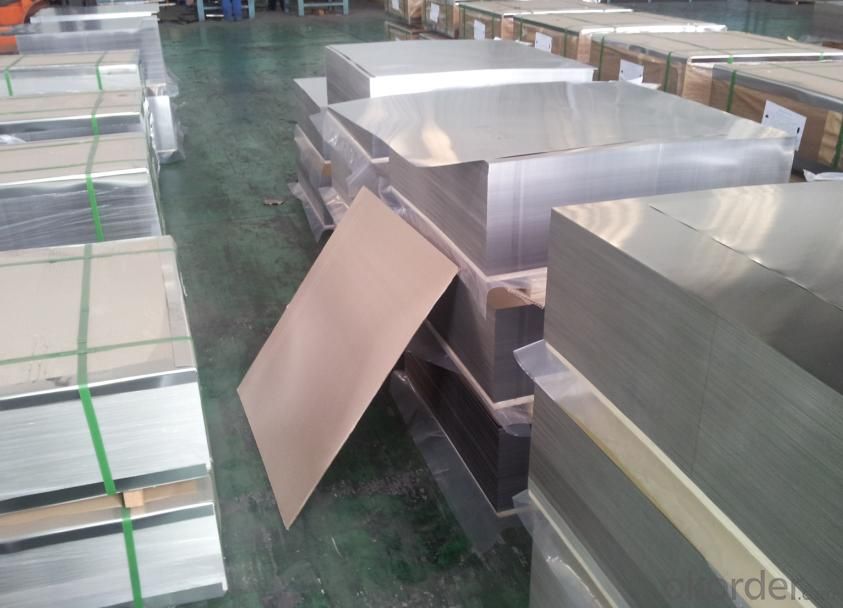
Sandard Seaworth Packing(wooden packing with water proof paper)
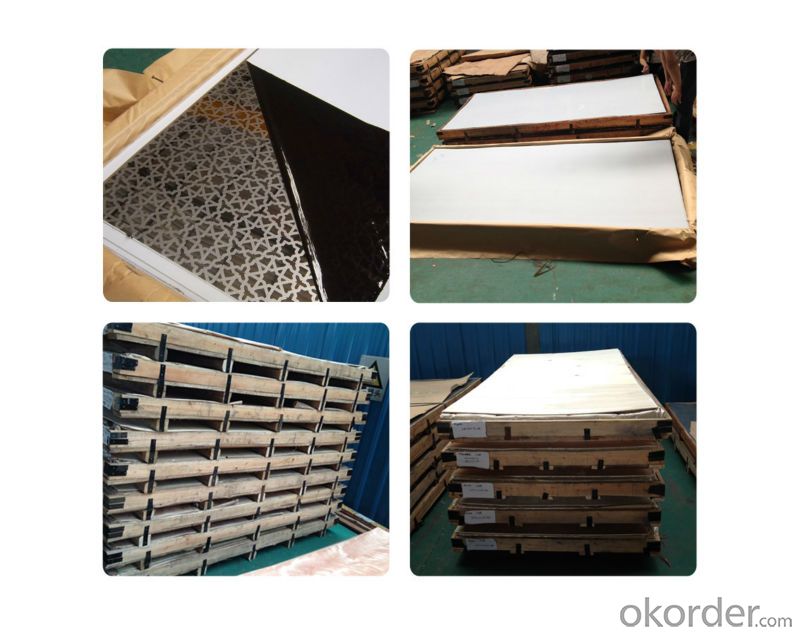
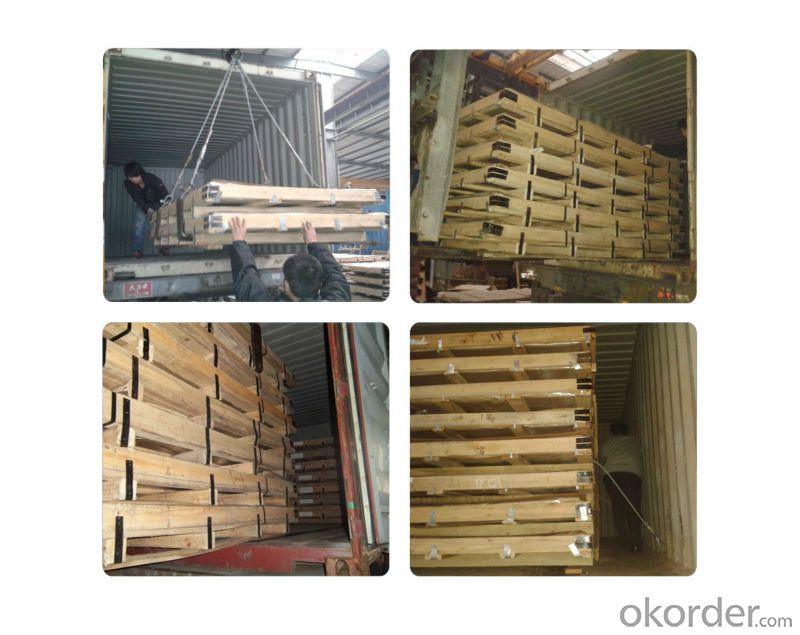
FAQ:
1. What's the quality?
very fine
2. How long get reply?
within 24 hours
If you have any question about stainless steel sheets,donot forget to sending the email to Us! You will get the competitive Price and have a very good experience about the Buying Process! CNBM International Corporation is always your trustful friend!
- Q: What are the standard sizes of stainless steel sheets?
- The specific industry and application dictate the varying standard sizes of stainless steel sheets. Nevertheless, there exist some widely accessible commonly used standard sizes. In the architectural and construction sector, stainless steel sheets usually come in sizes ranging from 4 feet by 8 feet (1220mm x 2440mm) to 5 feet by 10 feet (1524mm x 3048mm). These dimensions find common use in cladding, roofing, and interior design applications. In the manufacturing and industrial domains, stainless steel sheets are available in diverse sizes, including 4 feet by 8 feet, 4 feet by 10 feet (1220mm x 3050mm), and even larger sizes like 5 feet by 12 feet (1524mm x 3658mm). These larger dimensions frequently serve fabrication, industrial machinery, and equipment manufacturing purposes. It is important to acknowledge that custom sizes can also be produced according to specific project requirements. These custom sizes may encompass narrower or wider widths, longer or shorter lengths, or even different thicknesses to cater to a particular application's needs. Ultimately, industry standards, market demand, and manufacturer capabilities determine the standard sizes of stainless steel sheets. It is advisable to consult suppliers or manufacturers to verify the availability of the desired size before making a purchase.
- Q: What are the fire resistance properties of stainless steel sheets?
- Due to their unique composition and structure, stainless steel sheets possess excellent fire resistance properties. Unlike other materials, stainless steel does not easily burn or ignite when exposed to high temperatures. This is primarily because stainless steel contains a high amount of chromium, which generates a thin, protective oxide layer on its surface upon exposure to air. This oxide layer acts as a barrier, preventing the underlying steel from reacting with oxygen and further enhancing its fire resistance. Moreover, stainless steel exhibits a high melting point, typically ranging from 1400-1450°C (2552-2642°F), which surpasses that of most common building materials. Consequently, stainless steel sheets can endure extreme heat without distorting or compromising their structural integrity, thereby offering supplementary fire protection. Furthermore, stainless steel is non-combustible, signifying that it does not contribute to the fuel load of a fire. This attribute holds significant importance in construction and industrial applications, where fire safety remains a paramount concern. In conclusion, the fire resistance properties of stainless steel sheets render them an optimal choice for diverse applications, including building construction, transportation, and industrial settings, where fire protection is imperative.
- Q: Can stainless steel sheets be used in medical applications?
- Yes, stainless steel sheets can be used in medical applications. Stainless steel is commonly used in the medical industry due to its excellent corrosion resistance, durability, and ease of cleaning. It is often used for surgical instruments, medical equipment, implants, and other medical devices.
- Q: What industries commonly use stainless steel sheets?
- Stainless steel sheets are extensively used in various industries due to their exceptional properties and versatility. One industry that commonly utilizes stainless steel sheets is the construction industry. Stainless steel sheets are used for roofing, cladding, and decorative purposes, providing durability, corrosion resistance, and an aesthetically pleasing appearance. Another industry that extensively uses stainless steel sheets is the automotive industry. Stainless steel sheets are used for manufacturing body panels, exhaust systems, and various components due to their high strength, heat resistance, and corrosion resistance properties. Additionally, stainless steel sheets are also used in the production of fuel tanks and other critical components in the transportation sector. The food and beverage industry also heavily relies on stainless steel sheets. These sheets are used for fabricating food processing equipment, storage tanks, and pipelines. Stainless steel sheets are preferred in this industry due to their resistance to corrosion, high cleanliness standards, and the ability to withstand extreme temperatures, ensuring hygienic and safe food processing. The medical and pharmaceutical industries also extensively use stainless steel sheets. These sheets are used for manufacturing surgical instruments, medical devices, and equipment due to their corrosion resistance, biocompatibility, and ease of sterilization. Moreover, the energy sector, including oil and gas, power generation, and renewable energy industries, commonly uses stainless steel sheets. These sheets are utilized for constructing pipelines, storage tanks, and various equipment in these industries due to their resistance to corrosion, high temperature, and pressure. Other industries that commonly use stainless steel sheets include aerospace, marine, chemical processing, and architectural industries. Stainless steel sheets provide the required strength, durability, and resistance to harsh environments in these sectors. Overall, stainless steel sheets find applications in a wide range of industries due to their exceptional properties, making them a preferred choice for various manufacturing and construction needs.
- Q: Can stainless steel sheets be used for food packaging equipment?
- Yes, stainless steel sheets can be used for food packaging equipment. Stainless steel is a popular material choice for food processing and packaging equipment due to its durability, corrosion resistance, and hygienic properties. It is non-reactive, which means it does not interact with the food, ensuring that the quality and taste of the food remain intact. Stainless steel sheets can be easily cleaned and sanitized, making them suitable for use in food packaging equipment where cleanliness and hygiene are of utmost importance. Additionally, stainless steel has a smooth surface, which makes it easy to handle and prevents food particles from sticking to the equipment. Overall, stainless steel sheets are a reliable and safe option for food packaging equipment.
- Q: Can stainless steel sheets be used for elevator handrails or grab bars?
- Yes, stainless steel sheets can be used for elevator handrails or grab bars. Stainless steel is a popular choice for these applications due to its durability, corrosion resistance, and aesthetic appeal. Stainless steel sheets can be fabricated into various shapes and sizes to meet the specific requirements of elevator handrails or grab bars, ensuring safety and comfort for users. Additionally, stainless steel is easy to clean and maintain, making it a practical choice for high-traffic areas such as elevators.
- Q: Are stainless steel sheets suitable for elevator floor panels?
- Yes, stainless steel sheets are suitable for elevator floor panels. Stainless steel is a durable and corrosion-resistant material that can withstand heavy foot traffic and frequent cleaning without losing its structural integrity. Additionally, its sleek and modern appearance makes it a popular choice for elevator interiors.
- Q: What are the different types of stainless steel sheet surface patterns?
- There are several different types of stainless steel sheet surface patterns, including brushed, mirror, embossed, and perforated.
- Q: What is the impact resistance of stainless steel sheets?
- Due to its unique properties and composition, stainless steel sheets exhibit a high level of impact resistance. This refers to their ability to withstand sudden loads or forces without suffering permanent deformation or breakage. The material possesses exceptional toughness and durability, rendering it highly resistant to impact. The impact resistance of stainless steel sheets can be attributed to their high tensile strength and ductility. This alloy, which contains iron, chromium, and other elements, contributes to its strength and corrosion resistance. The presence of chromium forms a protective oxide layer on the steel's surface, preventing easy rusting or corrosion. Moreover, stainless steel sheets are available in various grades, each with its own composition and properties. The most commonly utilized grade for impact-resistant applications is 304 stainless steel, which offers good resistance against impact and finds widespread use in industries such as construction, automotive, and aerospace. The impact resistance of stainless steel sheets also depends on their thickness. Thicker sheets tend to possess greater impact resistance due to their increased mass and structural integrity. However, even thinner stainless steel sheets can provide significant impact resistance owing to the inherent strength and toughness of the material. In practical applications, stainless steel sheets are frequently employed in environments where impact resistance is vital, such as in the manufacture of machinery, equipment, and structures subject to high loads or potential impacts. They can endure heavy impacts without cracking, fracturing, or deforming, thereby ensuring the integrity and longevity of the final product. Overall, stainless steel sheets exhibit excellent impact resistance, making them a preferred choice in various industries. Their high strength, corrosion resistance, and durability render them suitable for applications where resistance to impact is crucial.
- Q: Are stainless steel sheets resistant to sulfuric acid?
- Yes, stainless steel sheets are generally resistant to sulfuric acid.
Send your message to us
Stainless Steel sheet with best polishing treatments
- Loading Port:
- Shanghai
- Payment Terms:
- TT OR LC
- Min Order Qty:
- 10000 m.t.
- Supply Capability:
- 5000000 m.t./month
OKorder Service Pledge
OKorder Financial Service
Similar products
Hot products
Hot Searches
Related keywords
